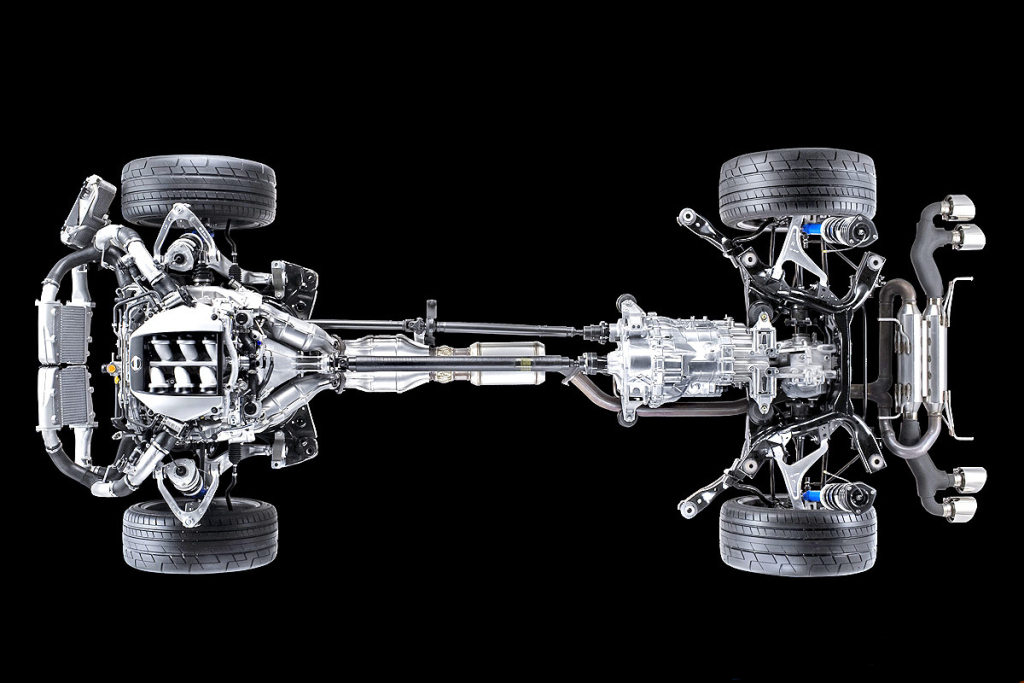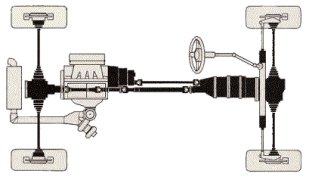Weird that the bellhousing is a maintenance item. Anyone want to tell me why?

 Photograph Courtesy Nissan
Photograph Courtesy Nissan
[GRM+ members read this article first. Subscribe and gain access to more exclusive content for only $3/month.]
Meet Our Expert:
Mike Mahaffey
President, main tuner, AAM Competition
aamcompetition.com
The GT-R is an impressive car. It can run a high-10-second quarter-mile with just a midpipe, downpipe and some tuning. However, to reliably and consistently gain more power, you would want to consider a couple of other upgrades such as a larger intake kit and larger injectors so you do not experience injector lock.
Just so you have a reference point, the factory turbochargers on the GT-R are capable of supporting up to about 580 to 600 wheel horsepower. To reach higher power levels, larger turbochargers are required as the factory turbochargers can literally supply no more air to the engine.
There are several milestones when upgrading the GT-R with factory turbochargers. We call these ”milestones” because no matter what else you do to the GT-R, it will not make any additional power:
I like to explain these figures because people often read information on the internet and it can get confusing. For example, although you can make 540 to 550 whp on the dyno with factory injectors, you could not run that power level on the street. When you run a car on the dyno, the load is not as great and the air is not as dense, especially during cooler parts of the year. Plus, the dyno run is just for a short duration.
On the road or track, an engine takes longer to accelerate, especially in taller gears. When a turbocharged vehicle takes longer to accelerate, more torque is generated as the turbochargers have more time to force air into the engine.
This additional torque also requires additional fuel to meet the new power output. While the factory injectors might have supplied enough fuel on the dyno to momentarily meet your engine’s fuel requirement, on the street your GT-R would need more fuel. The factory injectors are working at very close to 100 percent duty cycle–their maximum capacity–on the dyno at the 540 whp level. The stock injectors do not have the capacity for the extra torque the GT-R will make on the street, so the injectors can momentarily lock and allow the GT-R to run lean.
Now let’s look at why the rear exhaust can be limiting. With larger turbochargers, you can force about 570 whp or a little more out of the factory system. The backpressure created to do this is catastrophic, and the exhaust temperatures skyrocket.
The factory intake also shouldn’t be pushed too far. The factory intake system houses the GT-R’s mass airflow sensors. These sensors measure the incoming air to the engine. The more air that enters an engine, the more power the engine can produce and also the more fuel the engine needs to safely produce that power.
Although people have made 550 whp on the factory air intakes, they have peaked the MAF’s ability to measure the incoming air–it’s peaked around 500 to 510 whp–and therefore the GT-R doesn’t know that more air is entering the engine. More air without more fuel equals a dangerous, lean condition.
Luckily, the GT-R’s wide-band oxygen sensors monitor the air-fuel ratio in real time and nearly instantly add more fuel through the oxygen trimming function of the GT-R’s computer. Using the GT-R’s safeguards on a regular basis is not recommended.
We also have maximum recommended power levels for other key components:
We’ve built many GT-Rs in the 700 to 800 whp maximum range that utilize the factory engine. When you run closer to 800 whp, the stock rods will slowly start to fatigue and bend. We do not recommend running the factory engine at the high-700 to 800-plus whp range on a regular basis or engine failure will occur.
The factory transmission clutches hold well to about 720 whp. Depending on the particular GT-R, they sometimes slip at 730 whp and almost always slip at 760 to 780-plus whp.
Also, if you plan to launch your GT-R from time to time, the factory first gear is a weak link in the transmission. Therefore, many people who plan to take their GT-R to the drag strip and make over 700 whp decide to upgrade their clutches and first gears. These upgrades, as well as a few other key upgrades, are included in the AAM Competition STG I GT-R Transmission Package.
Our most popular upgrade is our AAM Competition GT650-R Power Package. It includes a 3-inch intake, catted downpipes, complete exhaust, ID1050x injectors with a plug-and-play harness, HKS spark plugs, Cobb AccessPORT and our competition E-tune. This bang-for-the-buck package will easily and reliably achieve 580 to 600-plus whp on a GT-R–that’s approximately 675 to 700 horsepower at the engine.
On the older GT-Rs, the bellhousings have to be replaced typically after 20,000 to 50,000 miles. Otherwise, the GT-R is one of the most reliable sports cars we’ve encountered.
In reply to thatsnowinnebago :
Absolutely no idea here. Ideally, a bellhousing shouldn't be moving much at all, assuming engine and transmission mounts are all in good shape. It's a big metal coupler that attaches two parts of the drivetrain... also very curious if anyone has any insight.
In reply to yupididit :
I wouldn't mind one for a winter daily, seem like they would be fun. What's the market like in your area? I see earlier cars going for around 50-60k fairly frequently around the Wyoming / Colorado area.
te72 said:In reply to thatsnowinnebago :
Absolutely no idea here. Ideally, a bellhousing shouldn't be moving much at all, assuming engine and transmission mounts are all in good shape. It's a big metal coupler that attaches two parts of the drivetrain... also very curious if anyone has any insight.
TIL.
It is easy to forget that the R35 is built like a backwards Ford RS200. The RS200 had a front mounted transaxle and a mid mounted engine. Conversely the R35 has a front mounted engine and a rear mounted transaxle. The bellhousing in the R35 just connects the engine to the driveshaft, and as such has internal bearings.

From what I have been able to gather - and if I am mistaken then please correct me - the support bearings actually get loose inside the housing, causing a rattle as they knock around, sympathetic vibration as the driveshaft can gyrate, and in more extreme cases the rattling and knocking can cause the knock sensors to read false knock so the computer pulls a bunch of timing.
Pete - correct.
Slop can develop at the bearings in the pre-2017 bellhousings. It develops play in the driveshaft and can chatter a lot when not under load. I had the bellhousing on my 2009 swapped to a 2017+ revised unit. Some people rebuild the pre-2017 housings with revised bearings too.
On your reverse RS200 note, another crazy bit is the GT-R then has an additional driveshaft ran parallel to the main driveshaft from the rear transaxle back to the front differential. All power biasing to the front is handled at the transaxle and sent back to the front.


In reply to RobertElder :
That is how the RS200 worked, too ![]()

Since Ford didn't quite know what to make of this AWD business, there was also a shift lever to make the car two wheel drive if the driver desired.
Displaying 1-10 of 17 commentsView all comments on the GRM forums
You'll need to log in to post.